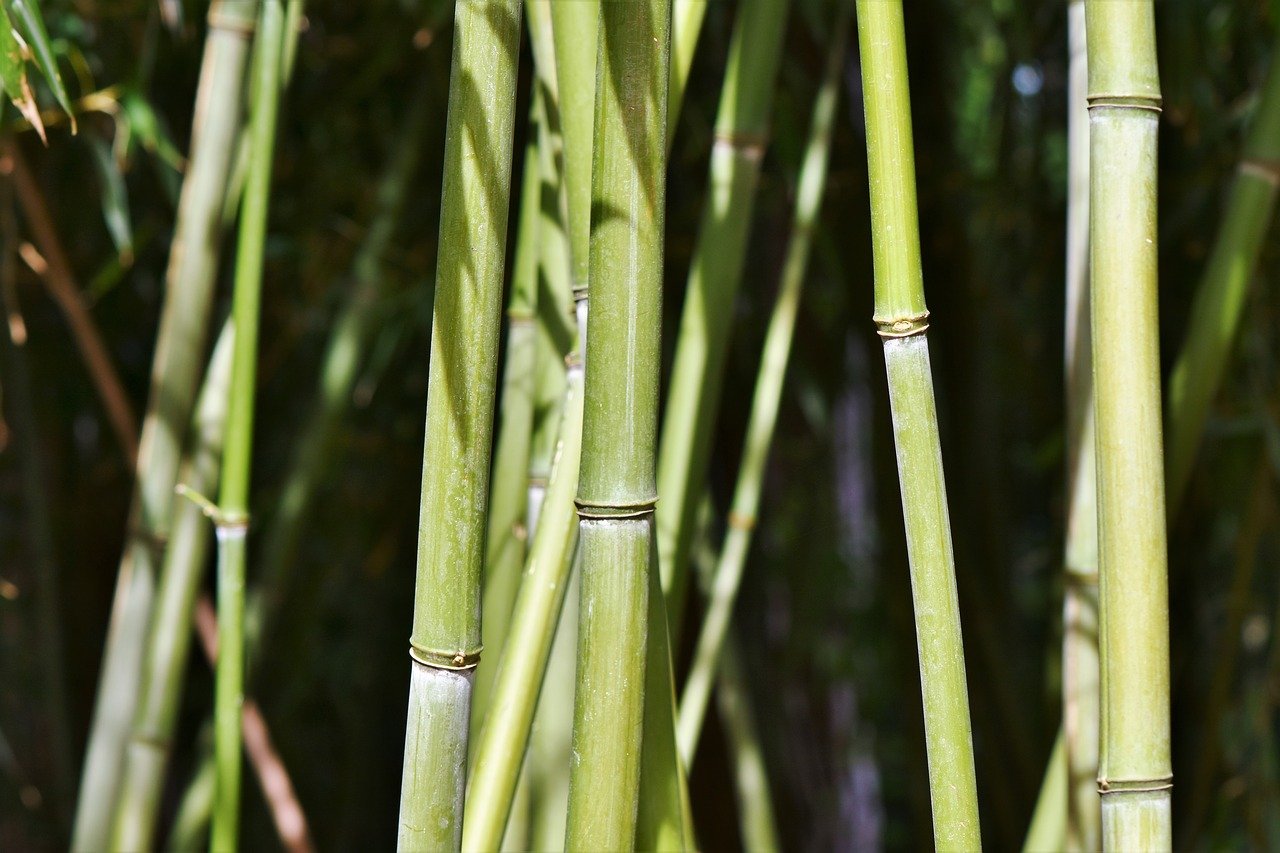Bamboo, that famous favourite food of Pandas, is actually a member of the grass family. They have a very striking look, with their distinctive stems and their frondy leaves, and they make a fantastic living screen or hedge, as well as being decorative and attractive as free standing plants. Bamboo can add structure to borders and provide a welcome back drop to flowering perennials, and they are surprisingly easy to grow and thrive in surprising conditions. But how to grow bamboo in UK? Read on to find out!
Bamboo Varieties

There are about a thousand species of bamboo, subdivided into different genera, and not all of these will grow in the climate of the UK.
The first that were introduced came into the country in the late 19th century, and were a rampant species from lowland China, which were very popular in Victorian gardens, where they often roamed freely and created large groves.
For those of us that don’t have acres of garden, a smaller, shrubbier version such as those that come from the cold, mountainous regions of Chile and the Himalayas are ideal.
Bamboo can be divided into clump forming and running plants.
- Clump forming bamboos spread slowly, because the root mass expands slowly, and they work very well as big specimen plants, or to plant in a mixed border. Clump forming bamboo tends to grow about 1-2 feet (30-60com) taller each year.
- Running bamboo spreads by rhizomes underground, which helps them spread fast and aggressively if they are not contained. Running bamboo makes an excellent hedge or screen, as long as you contain the roots to the areas you want to cover. Running varieties grow 3-5 feet (90cm-1.5m) taller each year.
Bamboo Care

A. Temperature
You can plant bamboo all year round, though if you have a very cold, exposed garden you should plant them in a warmer season so they have a chance to harden off before the first winter. Planting in spring is ideal, as the bamboo gets a chance to establish itself and grow strong rhizomes.
Most of the running type of bamboo prefer a good 5 hours of sunlight per day, while the clump forming types prefer light to moderate shade.
Some types of bamboo are very hardy and originate from areas of the world where temperatures drop as low as -25 to -30 degrees, but it rarely if ever gets this cold in the UK!
Other types of bamboo come from hot countries like Africa, Australia and tropical Asia, and need to be protected from cold and drying winds.
B. Soil
Bamboo is not a fussy plant whichever species it is, and will tolerate most soil types, but they generally prefer well drained, moderately acidic and well drained loamy soil.
They need to be kept well watered during the growing season, but they do not like to get their feet too wet, so you should not need to water additionally in winter. If your soil is the heavy clay type then you will need to add grit or sand to help drainage and keep your bamboo happy.
C. Spacing
You can plant your bamboo quite close together; in fact if you need an instant screen you can plant them just about back to back. Mature plants should be spaced about a metre apart, and you will just have to wait a little longer for them to fill in the gaps.
D. Planting
To plant a mature plant, dig a hole about twice the width and depth of the root ball, and dig in some compost or manure to provide the plant with nutrients. You should soak the root ball in water before planting, to give it a good drink, and to loosen a root ball that is too tight.
Place the plant a little lower than the rim of the hole, then pack the soil back around the plant. Water it in thoroughly to eliminate air pockets, then mulch with compost, manure, leaf mould or hay to aid water retention, and keep it warm.
E. Water and Feed
As the plant becomes established it will require watering frequently – 3-4 times a week during hot weather, and twice a week in milder temperatures.
You can feed your bamboo with a general purpose plant feed to strengthen it further; just apply once in early spring and again in the summer, the two main growth seasons of bamboo.
F. Pruning
If you need to prune your bamboo you can do it without fear of damaging the plant; just make sure you cut just above a node so that new shoots will spring up and you won’t be left with an unsightly dead end.
Any dead or damaged, spindly canes should be pruned right back to the ground. You can show off the beauty of your bamboo canes by removing some of the foliage from the bottom of the canes; either snap the branches off with a swift downward motion or trim them with secateurs.
G. Disease
Bamboo are strong healthy plants, but they are susceptible to a couple of diseases – the Bamboo Mosaic Virus can cause discolouration of the leaves and a die back at the top of the plant. There is no way to cure this, though you can slow the progression through your entire crop with some hard pruning.
Fungal diseases of the roots can also affect bamboo; watering them well but not too well is the key.
Do not allow your plants to become waterlogged, and water them at the roots rather than over the stems and leaves.
These plants are evergreen, though they do renew their leaves and you can expect to see considerable yellowing of leaves and some leaf drop – the clump forming varieties are particularly prone to this.
Final words
Bamboo is a great plant; easy to grow, maintain and care for, and rewarding in its growth. You can use it as a functional plant, or as a beautiful addition to an ornamental garden. Whichever way you choose to grow it you will be pleased with the effect!





